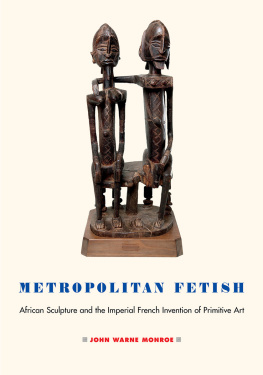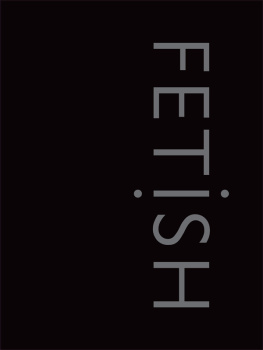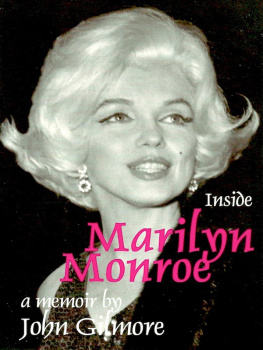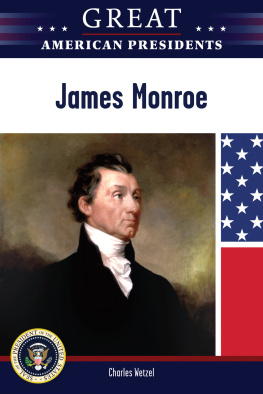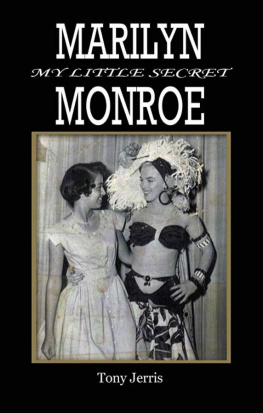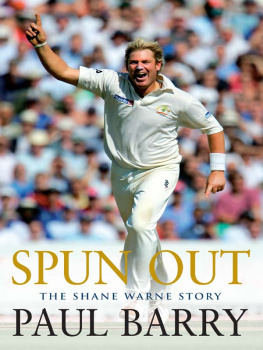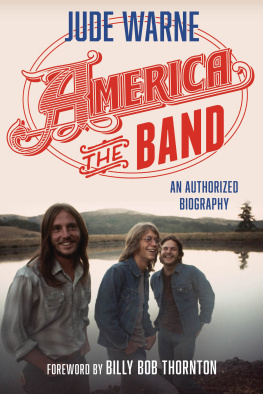John Warne Monroe - Metropolitan Fetish
Here you can read online John Warne Monroe - Metropolitan Fetish full text of the book (entire story) in english for free. Download pdf and epub, get meaning, cover and reviews about this ebook. year: 2019, publisher: Lightning Source Inc. (Tier 3), genre: Detective and thriller. Description of the work, (preface) as well as reviews are available. Best literature library LitArk.com created for fans of good reading and offers a wide selection of genres:
Romance novel
Science fiction
Adventure
Detective
Science
History
Home and family
Prose
Art
Politics
Computer
Non-fiction
Religion
Business
Children
Humor
Choose a favorite category and find really read worthwhile books. Enjoy immersion in the world of imagination, feel the emotions of the characters or learn something new for yourself, make an fascinating discovery.
- Book:Metropolitan Fetish
- Author:
- Publisher:Lightning Source Inc. (Tier 3)
- Genre:
- Year:2019
- Rating:5 / 5
- Favourites:Add to favourites
- Your mark:
- 100
- 1
- 2
- 3
- 4
- 5
Metropolitan Fetish: summary, description and annotation
We offer to read an annotation, description, summary or preface (depends on what the author of the book "Metropolitan Fetish" wrote himself). If you haven't found the necessary information about the book — write in the comments, we will try to find it.
Metropolitan Fetish — read online for free the complete book (whole text) full work
Below is the text of the book, divided by pages. System saving the place of the last page read, allows you to conveniently read the book "Metropolitan Fetish" online for free, without having to search again every time where you left off. Put a bookmark, and you can go to the page where you finished reading at any time.
Font size:
Interval:
Bookmark:
Writing this book has required me to draw together academic fields that normally do not interact much: the history of art in Africa and the socio-political, cultural, and intellectual history of modern France. As a result, I have depended on the generosity of experts in an unusually wide range of subject areas. My greatest scholarly debts are to Yalle Biro, Herbert M. Cole, Wendy A. Grossman, Thomas A. Kselman, Patricia M.E. Lorcin, Sally Price, Doran Ross, Christopher D. Roy, and Daniel J. Sherman. All of them have gone well beyond the call of collegial duty on my behalf from very early in this projects development, reading drafts, batting around ideas, sharing research, writing letters of support, and generally fortifying me with their enthusiasm. Alice L. Conklin, a critical reader of notable rigor and intelligence, intervened later in the manuscripts genesis and spurred insights that changed its shape in very productive ways. I am also grateful to the numerous anonymous referees who have scrutinized this text and the two journal articles on African art in France that preceded it.
Other colleagues have helped me hone my ideas in more subtle ways. Among Africanists: Antje Akkerman, Eli Bentor, Sarah van Beurden, Jean Borgatti, Anna Brus, Kathy Curnow, Jonathan Fine, Silvia Forni, Susan Gagliardi, Christraud Geary, Lorenz Homberger, Sidney Kasfir, Frederick Lamp, Steven Nelson, Michaela Oberhofer, Sylvester Okwunodu Ogbechie, Donna Page, Constantine Petridis, Peter Probst, Anja Soldat, Christopher D. Steiner, Z. S. Strother, Mikls Szalay, Ibrahima Thiaw, Carol Thompson, Robert Farris Thompson, Monica Blackmun Vison, Susan Vogel, Norma Wolff, and David Zemanek. Among historians, art historians, and others: Tunde Adeleke, Kevin Amidon, Naomi Andrews, Grant Arndt, Michael Bailey, Ann Beeder, Brian Behnken, Jelena Bogdanovic, Jennifer Boittin, Jonathyne Briggs, Jana Byars, Elisa Camiscioli, Clare Corbould, Nlia Dias, April Eisman, Charles Mark Haxt hausen, Kathleen Hilliard, Maya Jasanoff, Kelly Maynard, John Merriman, Frances and Howard Morphy, Joelle Neulander, Louisa Rice, Pamela Riney-Kehrberg, Jennifer Sessions, Debora Silverman, Tyler Stovall, Robin Walz, and David B. and Julia Wilson. Phillip Chen and Lenore Metrick-Chen deserve separate mention for their revitalizing intellectual energy, their willingness to join me in talking through ideas, and their generous friendship.
Several grants have made this work possible. Howard Collinsons decision to offer me a curatorial fellowship in African art at the University of Iowa Museum of Art during the 20056 academic year struck the spark with which it began; my department chair at the time, Andrejs Plakans, allowed that spark to catch by letting me take a years leave from teaching. Grants and awards from the Iowa State University College of Liberal Arts and Sciences and Center for Excellence in the Arts and Humanities funded several long stints of archival research in the United States, France, and Senegal. Fellowships from the George A. and Eliza Gardner Howard Foundation and the National Endowment for the Humanities gave me the writing time I needed to transform mountains of research notes and digital photographs into a fully developed manuscript. During this last phase, Dean Beate Schmittmanns support has been crucial, as has a publication subvention grant provided by the university.
This book has also benefited from a decade and a half of interaction with African art enthusiasts, both on the internet and in person. Though I have at this point had productive conversations with far more collectors and dealers than I can fully recall, I should give special mention to Kab Amadani, Michael Auliso, Vittorio Carini, Bruno Claessens, Adenike Cosgrove, Karim Deen, Roberto Domingos, Markus Erhard, Cooper Evans, Zachary Feere, Adam Ross Fisher, Margalit Fliegelmann, Jerelyn Fyvolent, Stphane Geuinet, Deborah Glasser, Bobbi Hamill, Robert van der Heijden, Lawrence Hultberg, Didier Jolly, Ed Jones, Abou Kaba, Mamadou Keita, Jan Kosters, Jyrki Lammi, Veronique Martellire, Amyas Naegele, David Norden, Lawrence Owens, Javier Peres, Francesco Peri, Steve Price, Ralph Proctor, Christophe Rolley, Lee Rubinstein, Antonio Ruvolo, Gary Schulze, Richard Schuster, Heinrich Schweizer, Rand Smith, Alexander Soifer, Jeff Spurr, Davide Terzi, Edmondo Trombetta, Phil Warish, and Louis Wells.
It would have been much more difficult for me to conceive and execute this project without the training in cross-disciplinary thinking I received as an undergraduate in Princeton Universitys European Cultural Studies program, where I was able to supplement my history coursework with large doses of cultural anthropology, art history, and literature. At multiple points in the drafting of this book, I have found myself relying on lessons learned from Andr Aciman, Robert Darnton, Dorothea Dietrich, Judit Frigyesi, Hildred Geertz, Anthony Grafton, Abdellah Hammoudi, Suzanne Marchand, Paul Muldoon, Philip Nord, Nell Irvin Painter, and Charles Ponce de Leon. Kevin Volans, a visiting faculty fellow during my freshman year, introduced me to the wonders of the arts of Africaa gift the full value of which only became clear many years later.
Much of this books richness derives from the expertise of librarians and generosity of holders of private archives. Guy Ladrires willingness to let me read extensively in the correspondence of Charles Ratton, and Franois Polis patience during the weeks I spent working through folder after folder of material in the famous rue de Marignan office were both invaluable. At the Muse du quai Branly, Sarah Frioux-Salgas was helpful both as a guide to her institutions own collections and as a source of research leads elsewhere. Mamadou Ndiaye, at the Archives nationales du Sngal, also provided very useful advice. At the Barnes Foundation, Barbara Beaucar, Amanda McKnight, and Katy Rawdon have inspired me with their intellectual engagement and enthusiasm. Jesper Kurt Nielsen, librarian and archivist at the Nationalmuseet in Copenhagen, was generous with his time and extensive knowledge of Carl Kjersmeier. In virtual space, I was able to learn a great deal from the vast online archives developed by Guy and Titus van Rijn and by James J. Ross. Romain Goumy-Arcouet, a French postcard collector, generously gave me his example of Albert Guillaumes La maladie noire.
Emily Andrew, my editor at Cornell University Press, has been extraordinarily responsive to questions, astute in providing feedback, and a source of heartening enthusiasm as my manuscript has made its journey into print. I would also like to thank Mike Bechthold, who produced the books map of Africa; Florence Grant, who did the copyediting; Jennifer Savran Kelly, who saw the text through production; and David Prout, the indexer. Robbi Siegel, at Art Resource, did a magnificent job of obtaining high-resolution image files and managing permissions.
Finally, I owe debts of gratitude to my family. My parents, John and Margaret Monroe, have provided steadfast support and encouragement, as have my brother Charles and his wife, Alice. The companionship of our dogs, Suley, Dervish, Djinn, Vesper, and Kafka, has played its own role in the genesis of this bookby giving me a reason to step away from my desk and take inspiration from the world beyond, with its various scents and things to chase. My greatest debt, however, is to my wife, and fellow historian, Wendie Schneider. This book would not exist at all if, one spring evening in 2005, she had not suggested that I write it. I dedicate it to her as a testament both of my love and of my highest intellectual regard.
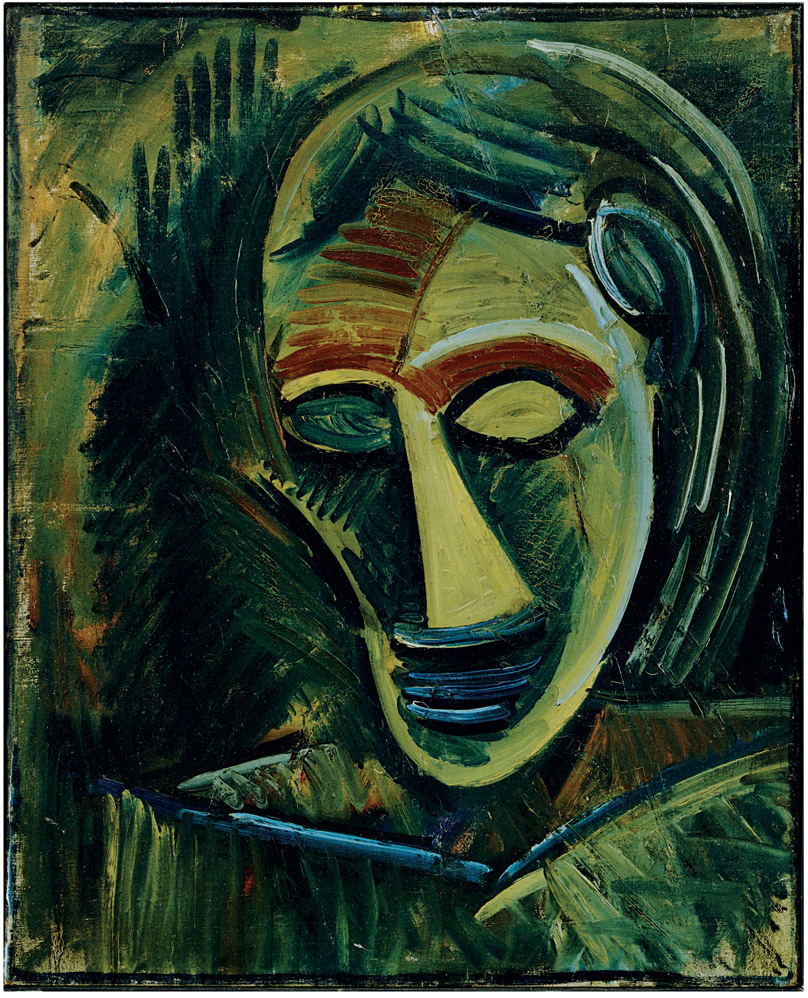
PLATE 1
Pablo Picasso (18821973). Womans Head
Font size:
Interval:
Bookmark:
Similar books «Metropolitan Fetish»
Look at similar books to Metropolitan Fetish. We have selected literature similar in name and meaning in the hope of providing readers with more options to find new, interesting, not yet read works.
Discussion, reviews of the book Metropolitan Fetish and just readers' own opinions. Leave your comments, write what you think about the work, its meaning or the main characters. Specify what exactly you liked and what you didn't like, and why you think so.

